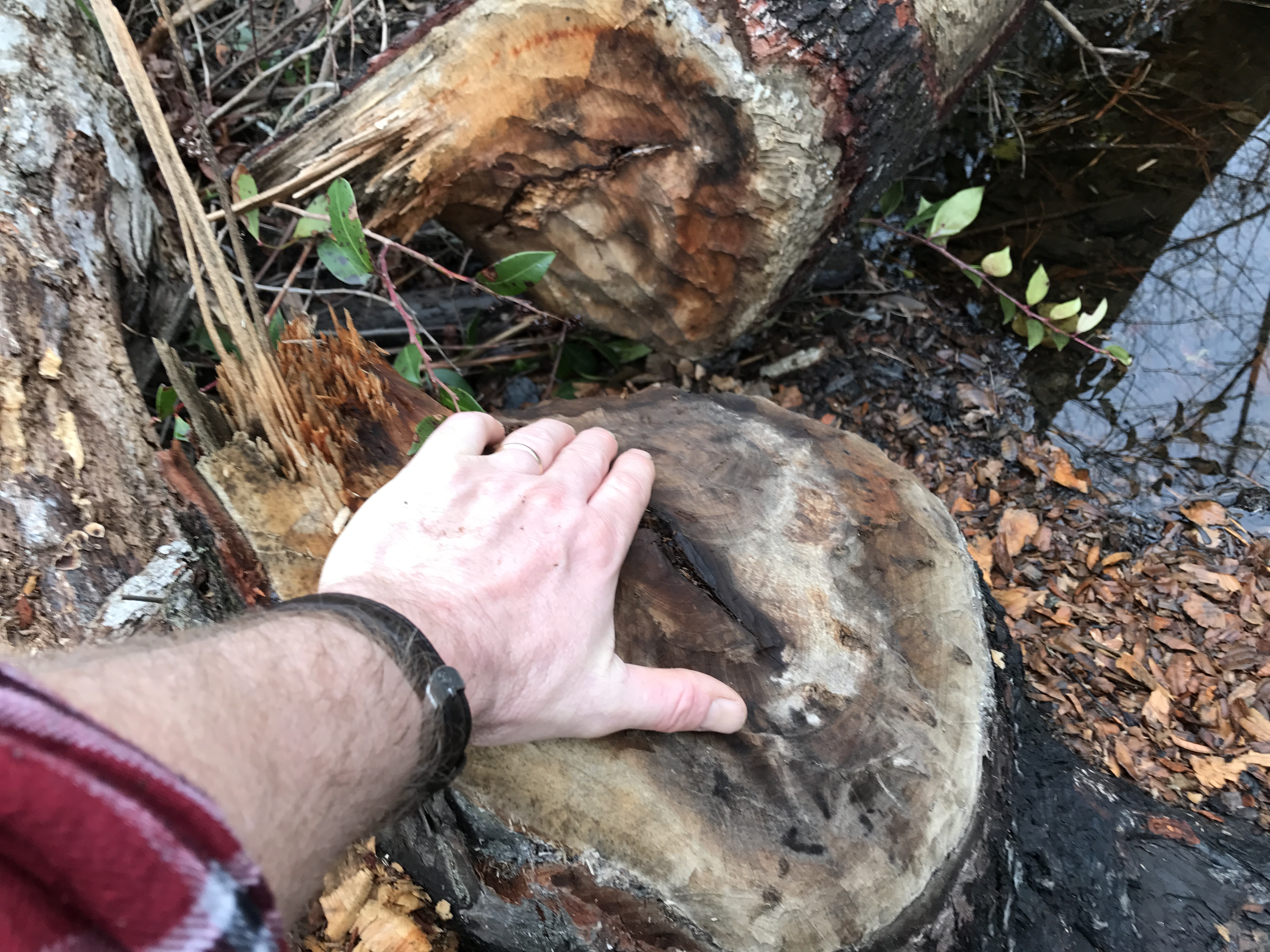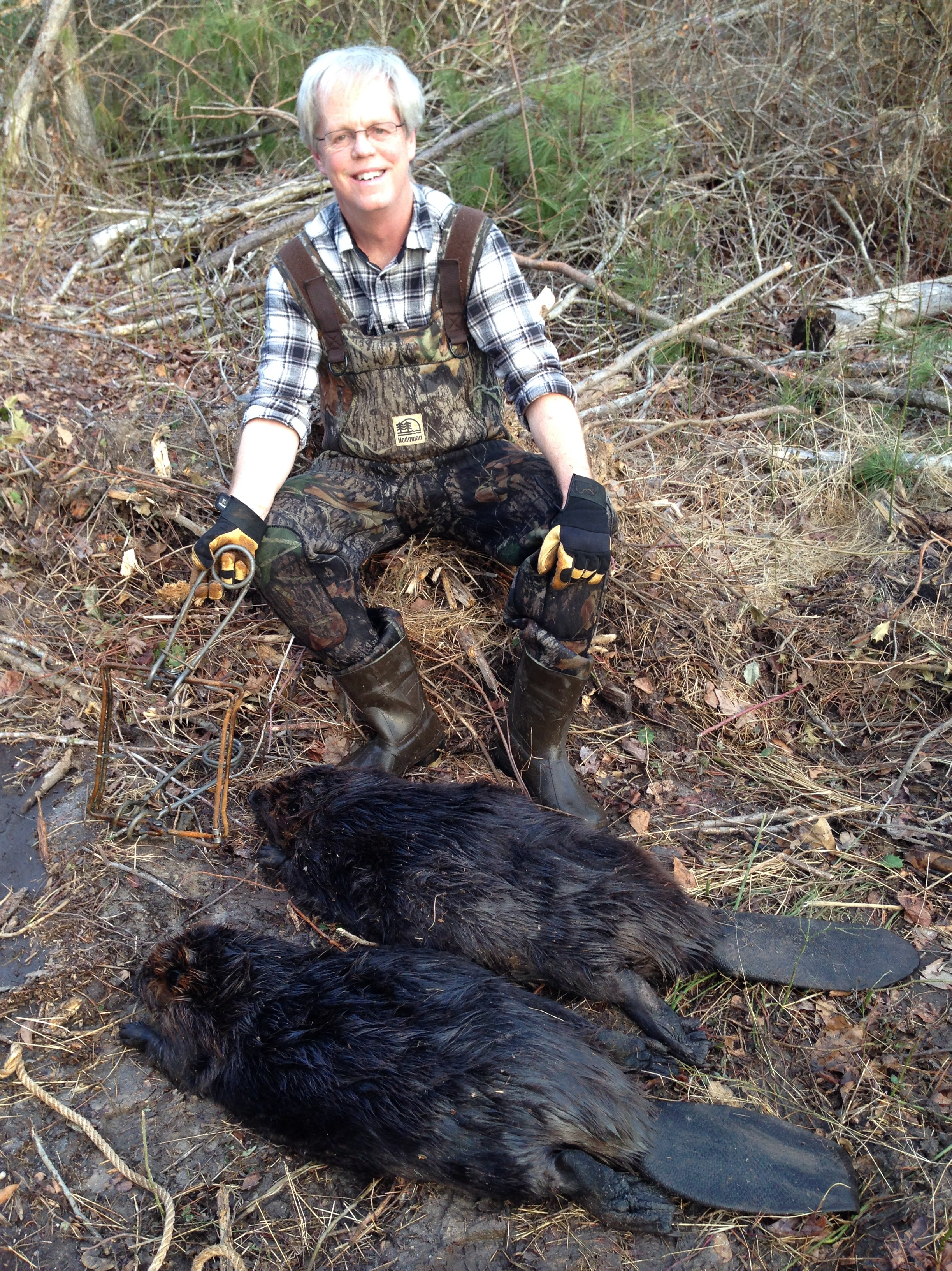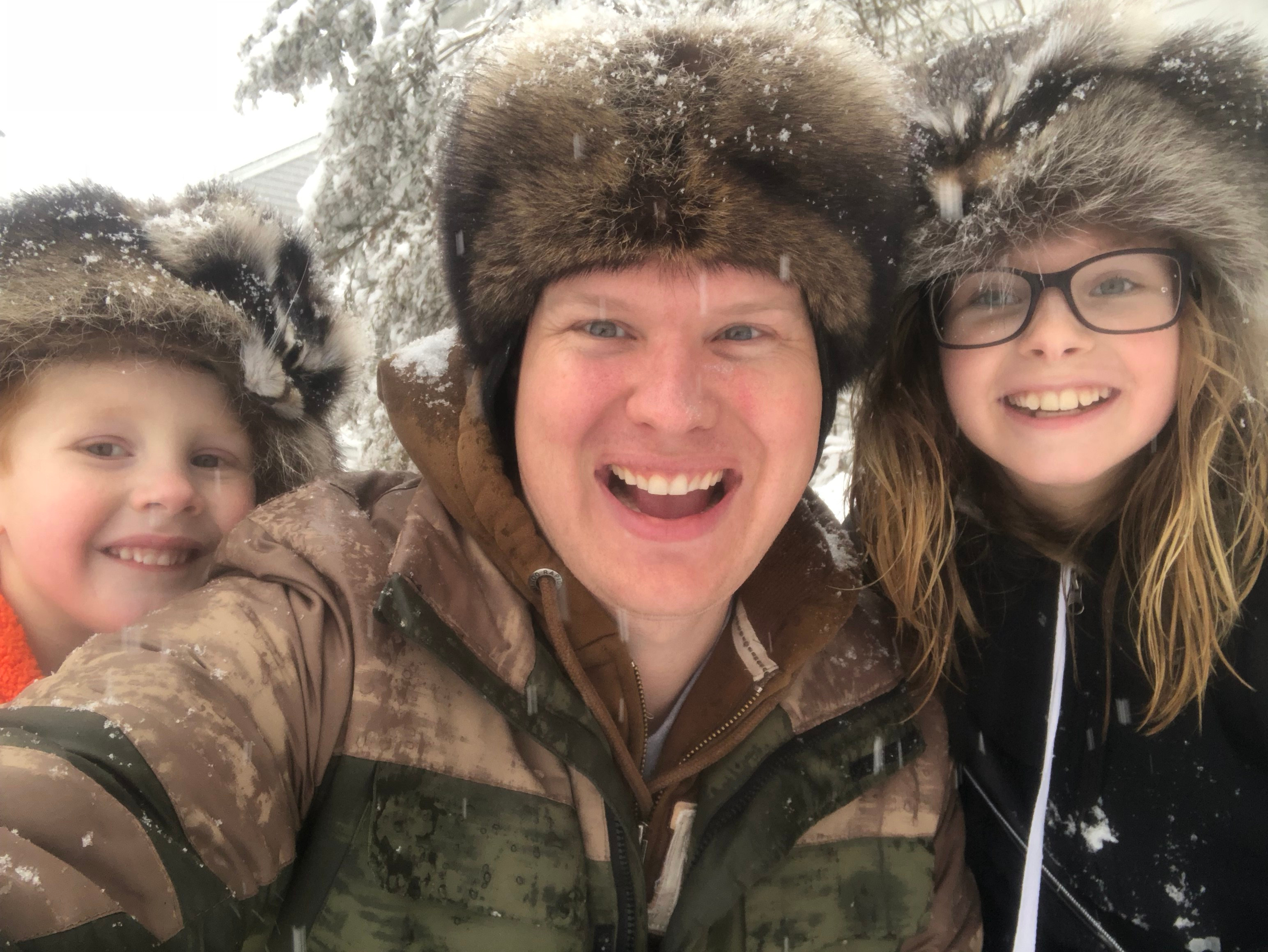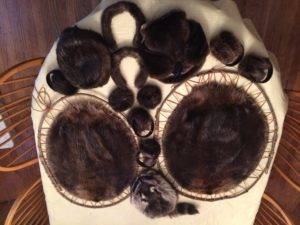My introduction to trapping furbearers began during my junior high school years. I am not sure how in fact it began, but I and a close friend of mine, Pete Leo (who I had lost contact with and only recently found out he passed away in 1988) started trapping muskrats and raccoon. We were self-taught, marginally successful, and certainly not making any money. We did however further solidify our love of the outdoors and I am certain we became better outdoors-men, if that is a correct term for young adolescents. What happened next was life. School. More school. Work. Marriage. Family. Moving. Divorce. Career. Marriage (got it right this time). Dear Pete, I’m sorry we lost track of each other. May you rest in peace. Hope to see you in the good place in the future.
Jump forward about 45 years.
My reintroduction to trapping began very shortly after our land purchase. Beavers! Damn beavers. When you own a dam with an overflow chimney, beavers are animals to which you need to be very, very attentive. Shortly before we became landowners, the previous owners hired a professional trapper who removed 18 beavers. They had plugged the overflow and the water level nearly spilled over the top of the dam. Water flowing over an earthen dam is like a knife through butter. The result would have been a catastrophic failure. Not to be taken lightly!
One of the sad truths about beavers, is that their value as furbearers has been mostly eliminated due to the waning popularity of fur products in general. Perhaps the most valuable products obtained from beavers presently are their anal glands. These glands produce beaver castor which is a food additive! (Look up “natural flavorings”) They multiply unchecked. They plug culverts; overflowing roads and fields. They flood woodlands. They destroy timber.  As a result, they have been relegated to the role of pests. Pests that are frequently killed and disposed of. Pests that people pay other people to remove for them. Except for me. This represents another way for me to be involved in habitat management. Don’t get me wrong, I appreciate the role beavers play in establishing and maintaining wetland environments, but I am more than willing to actively participate in their management.
As a result, they have been relegated to the role of pests. Pests that are frequently killed and disposed of. Pests that people pay other people to remove for them. Except for me. This represents another way for me to be involved in habitat management. Don’t get me wrong, I appreciate the role beavers play in establishing and maintaining wetland environments, but I am more than willing to actively participate in their management. 
Of course, like so many things related to habitat management, I am self-taught. There was no mentor nor past experience of beaver trapping to rely upon. Fortunately, many habits of beavers are quite similar to those of muskrats and I had good familiarity with them. The equipment however is much larger and needless to say heavier. Slogging through swamps carrying beaver traps and associated equipment I am certain is equivalent to at least some time in the gym. Trudging back out after a successful day is work!  My first trapping season was successful with 5 beavers, several raccoons, several opossums, and an otter. Two of the beaver that first year weighed over 60 pounds! My best season so far has been 15 beaver, 4 otter, 5 raccoons, some opossums, and two coyotes. I will save discussions about coyotes for a later posting.
My first trapping season was successful with 5 beavers, several raccoons, several opossums, and an otter. Two of the beaver that first year weighed over 60 pounds! My best season so far has been 15 beaver, 4 otter, 5 raccoons, some opossums, and two coyotes. I will save discussions about coyotes for a later posting.
The furs have been processed by me and sent to the tannery. Initially some were sent off to have Christmas presents made. Head bands, ear muffs, scrunchies, and hats were the items of choice and I think well received by the kids. This last year I chose to make fur items myself: Davey Crockett hats from raccoon, scarf from otter, fur pompoms for knit hats, and a beaver lap blanket. Recycling, organic, and renewable all in one!



Great story. Thanks for allowing me to help you with some of the little things that require a 2nd hand. I love seeing all the improvements you have made to your land.
Thanks Al. You are a great friend, excellent helper and a valuable mentor for us.
What a great post! I know I’ve loved the fur gifts you’ve gifted to me! And Blake has received SO MANY compliments on her pom-pom hat. 🙂 I always make sure to tell them that her grandfather made the pom-poms.
Keith, It was such a pleasant surprise to get an e-mail alerting me to the fact that you had made another post to your Wandering Trails Farm blog. I had given up hope of seeing new material. It is such a good read, and always so interesting. Hope the next installment won’t be too long in coming.
Keith,I really like reading about how you and my brother Pete were involved in trapping.
I recall sometimes how you and him would go out early in the morning before and after school to set and check your traps, a real commitment to trapping at an early age.
Also recalling that you didn’t make much money in doing it muskrats maybe brought $3.00 and raccoons the real prize of $10.00 a pelt,providing you didn’t ruin them when skinning and preparing them.
I like reading posts good like in your hunting & trapping.
Thanks Wayne. When you factor in people stealing our traps, I am certain we actually lost money. Often times the true value in things is not measured in cash however! I can remember one Saturday morning when we had a live animal in the trap. Pete ran back and woke up my dad to come and help us! My dad wasn’t happy but he came! I have fond memories of those experiences.